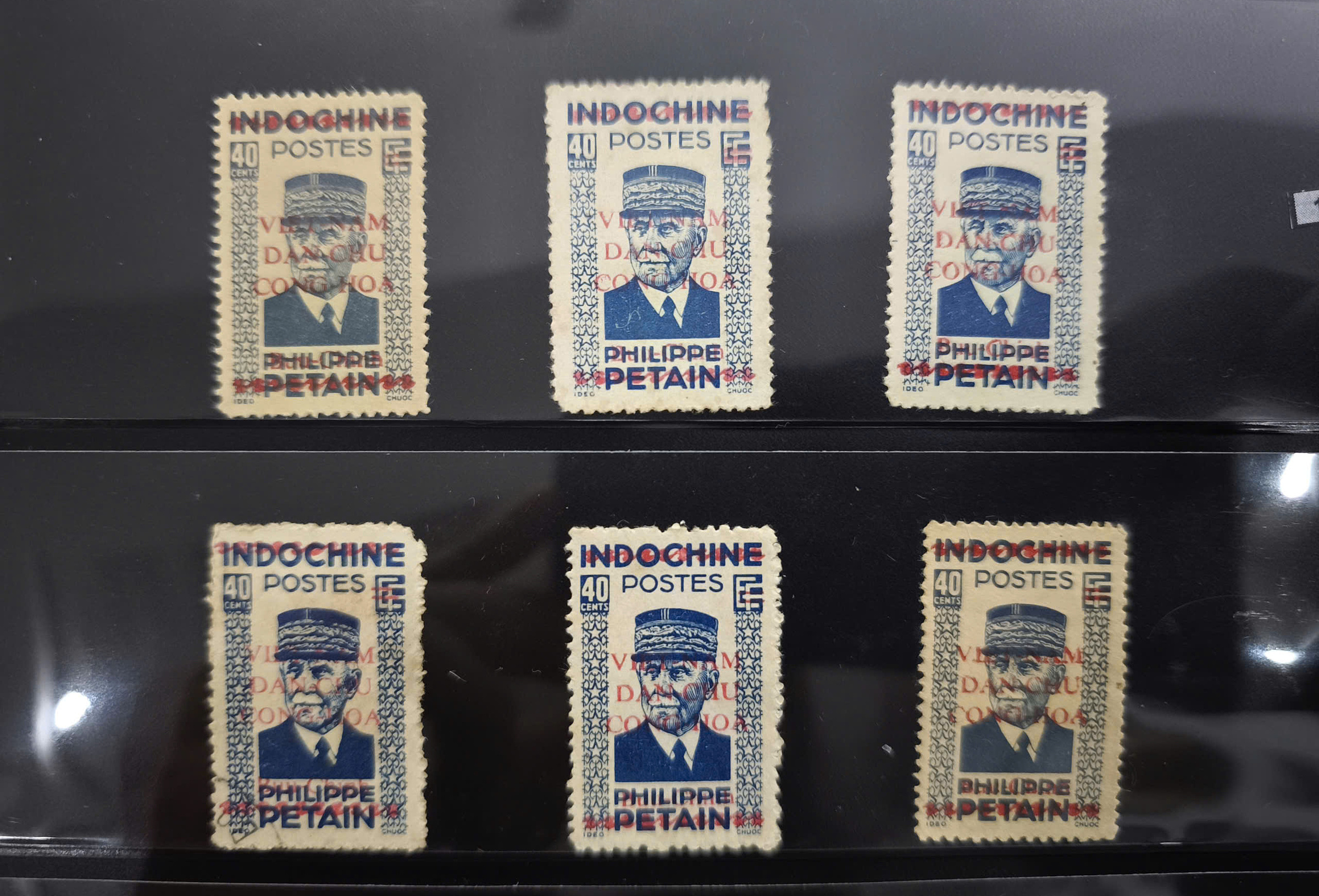Immediately following the August Revolution of 1945, the newly formed Democratic Republic of Vietnam planned to issue its own postage stamps to replace those of the former colonial administration. The old stamps, bearing the inscription "INDOCHINE," had been used throughout French Indochina, encompassing Vietnam, Laos, and Cambodia.
However, with the nascent nation focused on securing its independence, issuing new stamps was postponed. A resourceful and innovative solution was adopted: overprinting the existing Indochinese stamps.
Researcher Pham Tue, 81, from Hai Phong City, boasts a collection of 12,000 stamps from Vietnam and other countries. He explains that the Democratic Republic of Vietnam utilized 57 Indochinese stamp designs, obliterating the "INDOCHINE" inscription and overprinting them in red ink with either "VIET NAM DAN CHU CONG HOA" or "VIET NAM DOC LAP TU DO HANH PHUC." These overprinted stamps were circulated domestically and internationally in the first year after the August Revolution, asserting the country's sovereignty and independence.
 |
An Indochinese stamp featuring Petain overprinted with "VIET NAM DAN CHU CONG HOA" for use after 2/9/1945. Photo: Le Tan |
An Indochinese stamp featuring Petain overprinted with "VIET NAM DAN CHU CONG HOA" for use after 2/9/1945. Photo: Le Tan
On 28/7/1946, to commemorate the first anniversary of the August Revolution and the founding of the Democratic Republic of Vietnam, the President issued Decree No. 172/SL, authorizing the Vietnamese Postal Service to print and issue the first stamp series of independent Vietnam.
Designed by artist Nguyen Sang and printed by the Viet Nam An Thu Cuc (Vietnam Printing Bureau), the stamps featured a portrait of President Ho Chi Minh in five colors: bright green, red, yellow, blue, and purple. The bright green, red, and yellow stamps had denominations of 1, 3, and 9 hao, respectively. The blue and purple stamps, valued at 4 and 6 hao, included national defense surcharges of 6 and 9 hao, respectively.
"This was the first time a purely Vietnamese stamp bore the name 'Vietnam' along with the image of the leader who founded the Democratic Republic of Vietnam," Tue noted. "Therefore, this stamp holds immense significance politically, culturally, artistically, economically, and socially."
 |
The 1946 stamp series featuring President Ho Chi Minh, designed by Nguyen Sang. Photo: Le Tan |
The 1946 stamp series featuring President Ho Chi Minh, designed by Nguyen Sang. Photo: Le Tan
The second stamp series, also designed by Nguyen Sang, was released in 5/1949 to commemorate President Ho Chi Minh's 59th birthday. It was printed by the Viet Bac Central Printing House in Phu Tho.
The third series, released in 1951 for President Ho Chi Minh's 61st birthday, featured the President alongside a map of Vietnam and a five-pointed star. The three denominations – 100, 100, and 200 dong – were printed in green, brown, and red, respectively. Designed by Bui Trang Chuoc and printed at the Viet Bac Central Printing House, this series was unique for being printed on do paper (Vietnamese mulberry paper). Though thin, do paper is remarkably strong and durable, with these stamps remaining in good condition 74 years later. This third series is possibly the only one in the world printed on do paper.
The 11th series, released in 10/1954 to commemorate the Dien Bien Phu victory, featured denominations of 10, 50, and 150 dong, along with a special stamp valued at 0.6 kg of rice. "That's also the only stamp in the world with such a denomination," Tue said.
Tue, whose collection includes nearly all stamp series issued by the Democratic Republic of Vietnam from 1945 to 1975 and the Socialist Republic of Vietnam from 1975 to the present, emphasizes that each stamp is more than just a means of paying postage. They contain a wealth of information, showcasing the issuing country's name, historical events, geography, politics, people, organizations, society, landscapes, and nature, symbolizing each nation's traditions and values.
Recently, the Ministry of Science and Technology, in collaboration with the Central Propaganda and Education Commission and the Ministry of Culture, Sports, and Tourism, issued a commemorative stamp series for the 80th anniversary of the National Day of the Socialist Republic of Vietnam. The series includes a single stamp and a souvenir sheet. The stamp features a portrait of President Ho Chi Minh in a modern graphic style, both dignified and approachable.
The souvenir sheet displays the national emblem of the Socialist Republic of Vietnam and a map of the country. Its background features a bronze drum, a symbol evoking Vietnam's historical roots and cultural depth.
Le Tan












